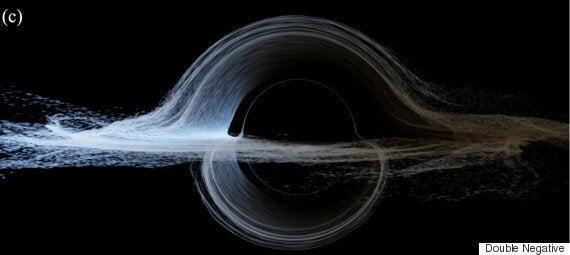
If you haven't seen "Interstellar" by now then you'll almost certainly have seen a picture of Gargantua, the enormous black hole that becomes the centre piece for the film's setting.
While Gargantua was stunning to look at, it was also remarkably accurate in its appearance having been painstakingly recreated by "Interstellar's" lead scientific advisor and physicist Kip Thorne along with the team at London-based visual effects studio Double Negative.
It was the first time Hollywood had tried to accurately portray a black hole through the eyes of a human. To undertake this hugely daunting task, the team at Double Negative built a custom software program which could accurately show the distorting effects that a black hole would have on light.
Called the "Double Negative Gravitational Renderer", the software turned out to be so accurate in fact that the team including Thorne have published a scientific paper about its benefits with the hopes that the software can help astrophysicists accurately recreate celestial bodies in the future.

As you can see between the Hollywood version (top) and the accurate version above, the differences are remarkably small.
What makes the software so special is its ability to accurate predict how light will bend around the black hole and then how this bending would look to the naked eye.
The resulting images show how the light would be utterly distorted in an effect known as gravitational lensing. It's created when light -- surrounding huge bodies such as black holes or twin galaxies -- is utterly distorted.
To find out more about the software and the incredible results watch the video below where the team give a brief description of the software and its achievements.